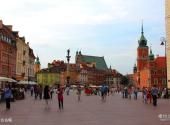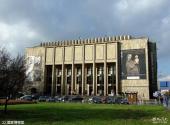
Scenic spot introduction:
Warsaw, the capital of Poland, still maintains the layout of the old and new cities. The old city on the banks of the Vilas River is lined with medieval buildings, while the new city with lush trees and full of vitality has the atmosphere of a modern metropolis and is known as the Little America in Eastern Europe. The more than 60,000 hectares of forests around Warsaw and more than 70 large and small gardens in the city have earned it the reputation of "the Green City of the World".
Attractions distribution:
Warsaw, the capital of Poland, is located on the banks of the Vistula River. Warsaw is pronounced "Warsaw" in Polish. The name was to commemorate a pair of lovers named Walsey and Shava, who overcame numerous obstacles and finally got married with their courage.
In the 13th century, Warsaw became a medieval town on the Vistula River crossing. In 1280, the Duke of Mazovia founded Warsaw and built a castle to control the Vistula River crossing. Warsaw has been prosperous since then. In 1344, Warsaw became the capital of the Duchy of Mazovia. In the 15th century, successive dukes built their own residences in Warsaw, and Warsaw's political status became more and more prominent as the city's functions were rapidly improved. In 1596, the Polish royal capital moved from Krakow to Warsaw Old Town From then on, Warsaw became the political and cultural center of Poland, and the city prospered immediately with large-scale construction. Warsaw was destroyed twice by the Swedes in 1656 and 1702, and rebuilt twice. At the end of the 18th century, it became one of the largest cities in Europe.
At the end of World War II, the Polish people launched an uprising against the Nazi occupiers in Warsaw. After the uprising failed, Hitler ordered Warsaw to be wiped off the face of the earth, and 85% of the buildings in the ancient city were purposefully destroyed. At that time, some Westerners once asserted: "Warsaw will never reappear in the world, at least there is no hope for 100 years." After getting rid of the war in 1945, the Polish people began to rebuild the city as it was, not only keeping Warsaw's medieval appearance, but also building a new urban area that exceeded the scale and level before the war.
Today, Warsaw still maintains the layout of the Old Town and the New Town. Various historical monuments and places of interest are mostly concentrated in the Old Town, especially the magnificent palaces, huge church , various watchtowers, castles, etc., attract a large number of tourists from abroad. In the new urban area, modern high-rise buildings are connected one after another, and various shops, restaurants, hotels and guesthouses are everywhere. The residential area with elegant environment is well-planned, convenient for living, lush trees, and extensive planting of flowers and plants, just like a garden. There are nearly 70 parks of various sizes in the urban area of Warsaw, with an average green area of 78 square meters per person, ranking among the best in the capitals of various countries in the world.
Scenic spot features:
City tour, Chopin, World War II, ancient city, architecture, church , palaces, parks, museums
Tour route:
1. Lesser Poland: This includes the entire southeastern region of Poland, from the Lublin Highlands to the Carpathian Mountains on the border between Slovenia and Ukraine. Such as the old capital of Poland, Krakow, and the Tatra Mountains.
2. Silesia: Located in the southwest of Poland, it is divided into Upper Silesia, Lower Silesia and the Sudetenland. Upper Silesia is the industrial center of Poland, Lower Silesia is a fertile agricultural area, and Wroclaw is its cultural and economic center.
3. Greater Poland: It is the cradle of Poland and is especially famous for its trade fairs.
4. Pomerania: It stretches eastwards from the German border along the Baltic Sea to the Vistula River Valley. There are two major urban centers in this area, namely Szczecin in the west and Gdansk in the east. There are many tourist attractions on the coastal beaches between the two cities. The inland area is a rolling forest and lake area, dotted with castles and towns, the most important of which is Toruń.
5. WARMIA & MASURIA: The Great Masurian Lakes region east of Olsztyn is a lush mountainous area with clear glacial lakes, quiet farms and dense forests. There are more than 2,000 lakes in the region, including the largest lake in Poland → Lake Sniardwy. All the lakes are connected by canals with a total length of 200 kilometers.
Best time to visit:
All seasons
Shopping recommendations:
(Shopping) Vodka, amber.
(Food) Bazaar, bigos, bacon, Polish fried pork chops, various vegetable soups, etc.
Scenic spot location:
Europe > Poland > Warsaw
How to get there:
In Warsaw, buses, trams and subways all use the same ticket, which can be purchased at fixed ticket offices, newsstands or some shops scattered throughout the streets.
There are no ticket sellers on any of the Warsaw buses, and all types of vehicles run very punctually. Tourists can arrange their tours based on the public transportation map in the bus stop and the timetable of the vehicles.
Scenic area map:
Click to expand the scenic area map
Warsaw Weather Forecast:
Find out where Warsaw is located in advance Europe > Poland > Warsaw The latest weather forecast, make perfect preparations before your trip and have a pleasant journey^-^















